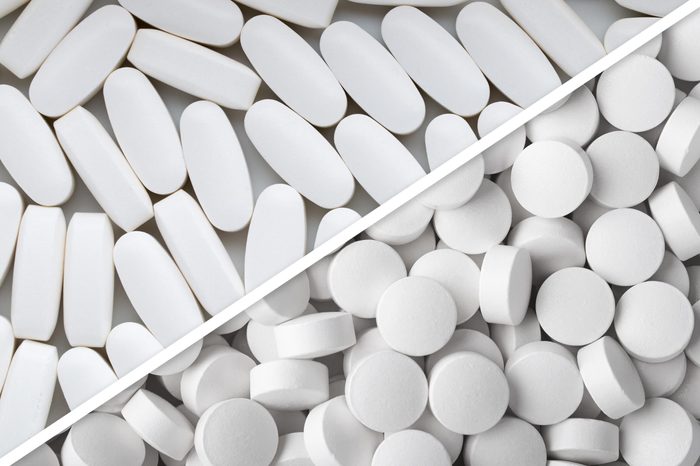
Magnesium and calcium
When these minerals are taken at the same time, they may not be quite as effective, says Tod Cooperman, MD, president of consumerlab.com, an independent testing company focused on health and nutrition products in White Plains, New York. “Taking large amounts of minerals with other minerals will reduce absorption,” he says. In essence, the minerals compete with one another and both lose out. Maximize your benefits by taking any mineral supplements at least two hours apart. This is one of the six things you should know before you begin taking magnesium supplements.
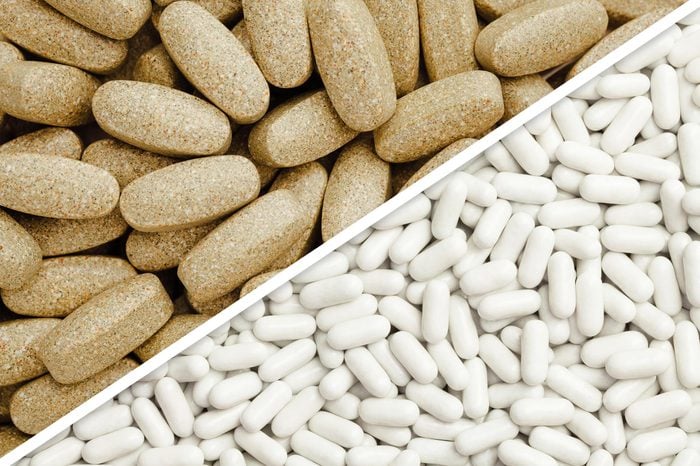
Zinc and copper
Among zinc’s many benefits, enhanced immunity ranks high. You might turn to the mineral for help in staving off or shortening the duration of common colds, but you should know that zinc interferes with copper absorption. Some people need to take copper due to conditions that cause copper deficiency. If you must take copper and also take zinc, space the two out by at least two hours, Dr. Cooperman says. High doses of zinc taken over the long term (50 mg or more per day for 10 weeks or longer) can also cause copper deficiency. “This is something you can talk to your doctor about,” he says. Don’t miss these signs you’re not getting enough zinc.
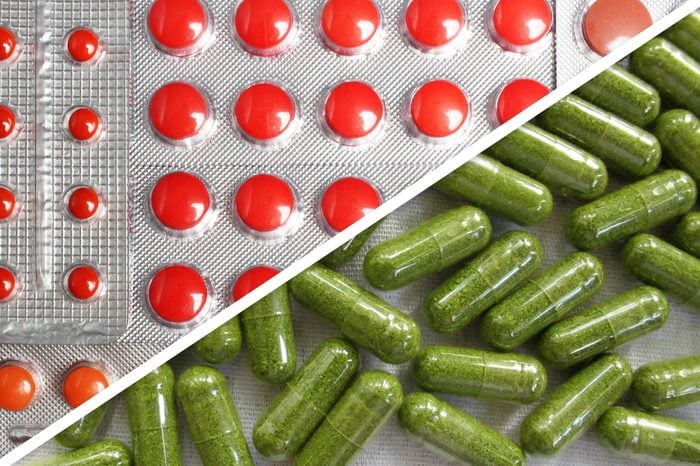
Iron and green tea
You need iron to help distribute oxygen to cells—it’s vital for your energy. But if you mix it with green tea, black tea, or curcumin supplements, your body won’t absorb the mineral. It’s OK to drink green tea beverages—such as matcha—just don’t do it with your iron supplements, Dr. Cooperman says; spread the two apart by a couple of hours.
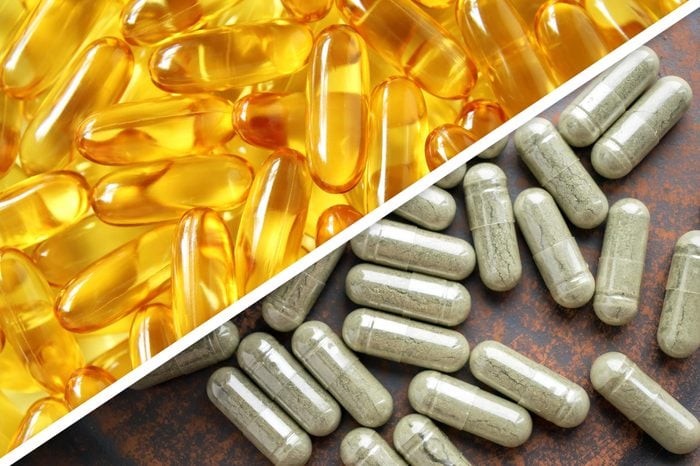
Fish oil and gingko biloba
Omega-3 fish oil supplements may tame inflammation and improve your mood, but when you take these supplements with herbs that thin the blood—such as ginkgo biloba or garlic—they may prevent clotting and can lead to uncontrolled bleeding, Dr. Cooperman says. To be safe, split them up by at least two hours. Find out which vitamins are a waste of money and could even be dangerous.

Melatonin and other sedating herbs
You can easily overdo herbs or supplements with sedative properties. These include melatonin, valerian, ashwagandha, kava, and St. Johns’s Wort: “When taken together, they can cause too much sleepiness,” Dr. Cooperman says. Always read the labels to find out what you can expect from supplements. Here are some more things to know if you are going to take melatonin.
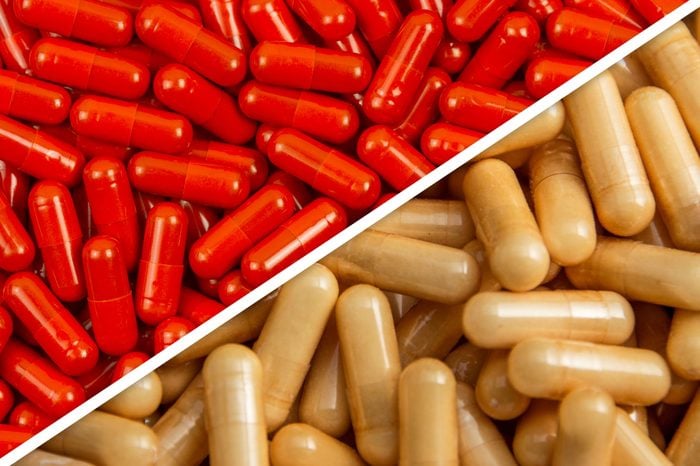
Red yeast rice and niacin
If you are one of the 95 million Americans with high cholesterol, you might like the idea of taking a natural supplement to lower your levels. Two possible pills that lower cholesterol levels—red yeast rice and niacin—don’t play well together. “Doubling up doesn’t increase the benefits and may be harmful to the liver,” says Todd Sontag DO, a family medicine specialist with Orlando Health Physician Associates in Florida. When prescription cholesterol-lowering drugs are added to the mix, your risks can increase. Be sure you’re aware of niacin flush and what you can do about this potential side effect.
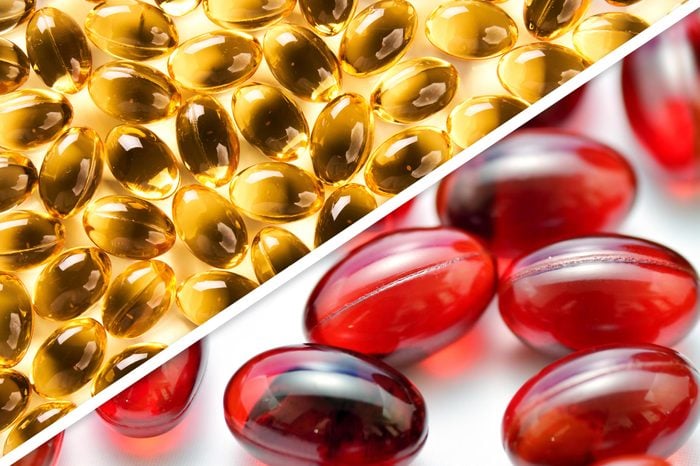
Vitamins A, D, E, and K
If you take vitamin K with other fat-soluble vitamins such as A, D, or E, you may not be absorbing as much as you would by taking them at different times, Dr. Cooperman says. “If you take a multivitamin don’t worry, but if you are K deficient and need extra K, take it two hours apart from the other fat-soluble vitamins,” he says. Believe it or not, vitamin K is one of the nutrients even nutritionists don’t get enough of.
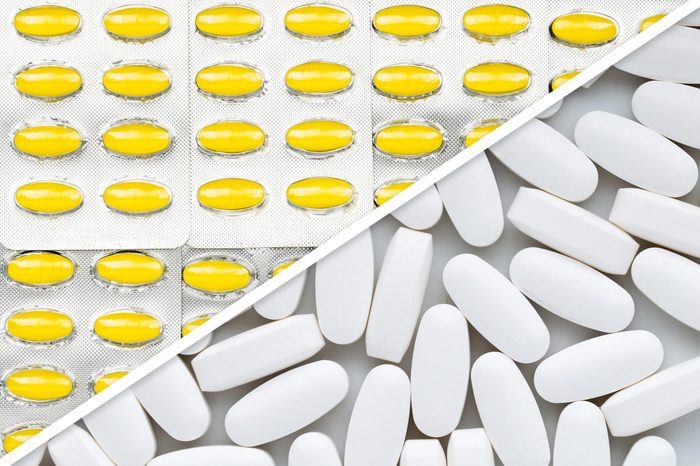
Potassium and calcium
Again, these necessary minerals will compete for absorption by the body, meaning you get less of each when you take them together, warns Dr. Cooperman. People who labor or exercise in humid climates or have digestive issues can fall short on potassium; if you need to take both supplements, be sure to space them out by a few hours, he advises. Don’t miss these signs your body is running low on key vitamins.
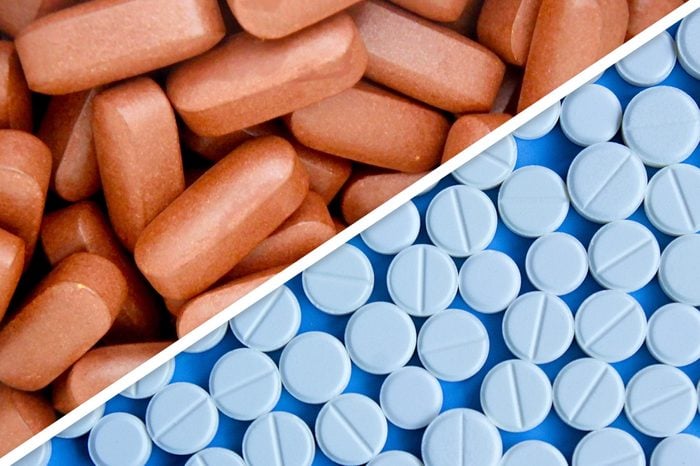
St. John’s wort and antidepressants
You need to be wary of over-the-counter or prescription drugs that can interact poorly with supplements, says Robert Glatter, MD, an assistant professor of emergency medicine at Northwell Health in New York City. For example, St. John’s wort may cause fever, confusion, and anxiety if it’s taken with other antidepressants. Antidepressants and St John’s wort both increase levels of the feel-good brain chemical serotonin. “This can cause serotonin syndrome and in severe cases, it may lead to muscle rigidity and seizures,” he says.
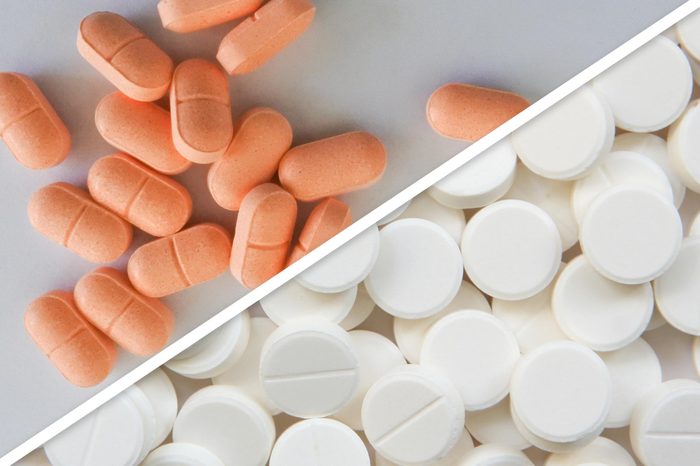
CoQ10 and your diabetes meds
CoQ10 is a powerful compound that helps your heart. Dr. Glatter warns that “CoQ10 can also lower blood sugar, and if you are taking other diabetes drugs, you run the risk of developing low blood sugar,” he says. CoQ10 can also lower blood pressure. “In combination with blood pressure medications, this can cause dangerously low blood pressure,” he says. “This can happen out of the blue, often after you have been taking CoQ10 for six to eight weeks, and it could precipitate a fall or head injury.” Watch out for these other symptoms of low blood pressure.
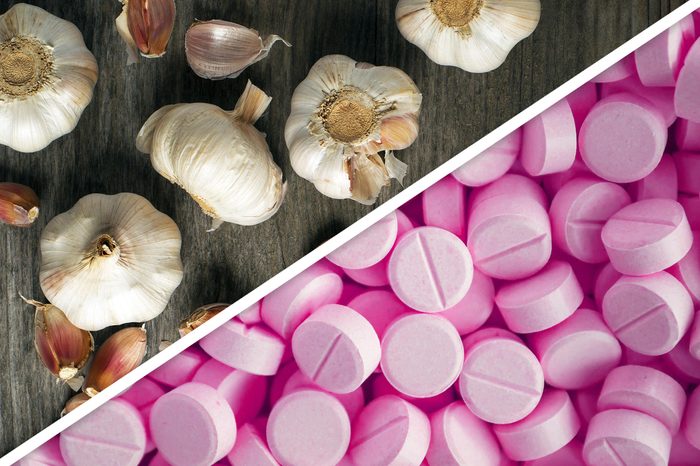
Garlic and OTC or Rx blood thinners
Garlic thins out the blood, and if you take a daily baby aspirin or a blood thinner such as Coumadin (warfarin), it could be risky, Dr. Glatter says. “It can cause bleeding episodes after a fall or injury, and there’s a high risk of internal bleeding,” he says. His advice: Be careful and make sure your doctor knows exactly what you are taking and why. “Just because something is natural doesn’t mean it is risk-free.” Garlic isn’t the only supplement that can up your bleeding risk. Ginkgo biloba, fish oil, ginger, feverfew, vitamin E, and white willow bark are also on the list. Make sure you know the super-important questions to ask before you take prescription medications.
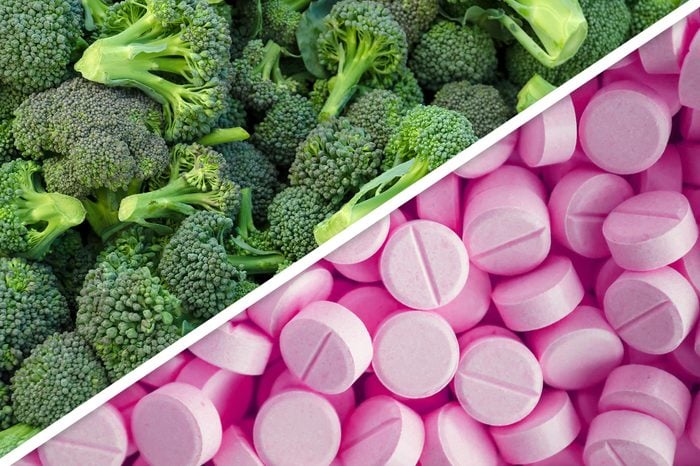
Vitamin K and blood thinners
Some vitamins and supplements can interfere with blood-thinning blood pressure drugs, Dr. Glatter says. Vitamin K—even in foods such as kale, lettuce, broccoli, and chickpeas—can counteract a blood thinner’s benefits. This is one of the more common food-drug reactions. Echinacea, a popular cold remedy, may decrease the effectiveness of blood thinners, and increase stroke risk, Dr. Glatter says. “This is a big one to be aware of.” These are some other foods you shouldn’t eat with certain medications.

Antibiotics and iron
Taking antibiotics—especially those in the tetracycline family—along with iron supplements can dampen the effects of the antibiotics, making them less likely to work, Dr. Glatter says. Spacing out the two will help.
Next, be sure to check out these vitamin mistakes you might not know you’re making.

